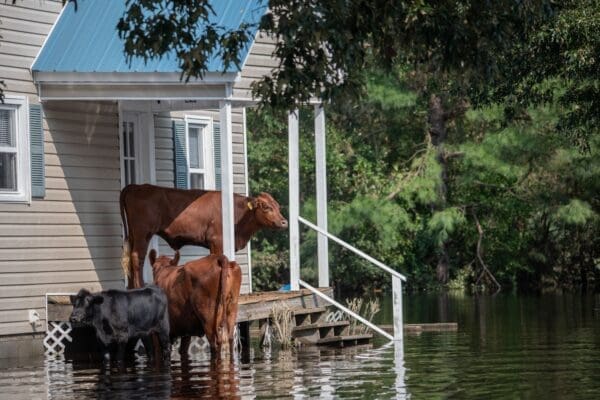Understanding the Factors That Affect Flood Insurance Costs in Ohio

Ohio’s unique landscape makes it susceptible to floods. Because standard homeowners insurance excludes flood damage, many homeowners must take out a separate policy.
With the introduction of Risk Rating 2.0, NFIP-backed flood policies are changing. Learn more about how these changes could affect your premiums. Then, consider comparing your rates to those of private insurers.
High-Risk Areas
Flooding can cause a lot of damage. It can wreak havoc on homes, businesses, and entire communities. This is why getting a policy to cover any losses incurred due to flooding is important. However, the cost of this coverage varies depending on where a property is located and its risk level. According to FEMA’s Risk Rating 2.0, a building’s occupancy, first-floor height, and proximity to bodies of water can affect its flood risk. It’s also important to understand that standard homeowners and renters insurance policies don’t cover flood damage.
In Ohio, several counties have a high risk of flooding. Guernsey County has the highest average annual rates at $2,256, while Vinton County has the lowest with an average of $614 per year. This is likely because Guernsey and Williams counties have more historical flooding events than other areas of the state.
Another factor affecting flood insurance costs in Ohio is climate change. The climate change phenomenon has complex, interacting effects on the environment and everyone. The effects of climate change can impact weather patterns, including rainfall and temperature. These factors are being taken into account by insurers when calculating risk. As a result, many companies are making site selection criteria based on the likelihood of natural hazards and climate risks. This helps reduce their potential exposure to loss and mitigate the risks of floods, wildfire, heat, and wind.
Structural Design
Civil and structural engineers use design and analysis to ensure public facilities, homes, and other structures can withstand the loads and forces they may experience. These include environmental loads like wind, snow and ice, live or dead loads like people and furniture, and structural loads like pressure, temperature, and buoyancy.
As you can imagine, these calculations are complex. But if incorrect, they could affect your flood insurance costs. That’s why FEMA created maps that identify areas at high risk for flooding, and all federally backed mortgage lenders require mortgagees to buy flood insurance. Risk maps are vital in protecting communities from the financial burdens of repeated flooding and promoting responsible development, construction, and land use.
However, the accuracy of these maps depends on several factors, including geography, elevation, foundation type and construction, proximity to bodies of water, flood history, and the frequency of flooding in your area. These factors are now incorporated into FEMA’s new Risk Rating 2.0 system that will set premiums more accurately.
This new rate system is based on your property’s risk and includes:
- Your building’s elevation.
- The construction of the foundation and any improvements.
- Your home’s location.
- The frequency of flooding in your community and the types of valuables covered by your policy.
You can also lower your rate by choosing a higher deductible, reducing your monthly premium but leaving you responsible for more of the cost if you file a claim.
Coverage Type
Many assume standard homeowners’ insurance covers flood damage, but it usually doesn’t. Instead, residents should purchase a separate policy through the National Flood Insurance Program (NFIP). This coverage protects Ohio homes from damage caused by sudden and unpredicted flooding events.
NFIP policies are sold by companies such as Nationwide, State Farm, and Progressive. Private companies own those insurance brands, but the government backs their policies. As a result, the company’s NFIP policy typically has lower rates than other privately-issued insurance.
The NFIP’s premiums depend on the home’s risk level and location. Generally, the more risk a property has, its premiums will be higher. However, some low-risk properties may have rates significantly below the national average.
If your home is located in a high-risk zone or an area at significant risk of flooding, you’ll likely have to pay higher premiums for NFIP coverage. Most mortgage lenders require that you get an NFIP policy to obtain a government-backed mortgage for a home in these areas.
On the other hand, most NFIP premiums are much cheaper for homes in low-risk zones. In these cases, the premium is less than the cost of repairing or replacing items damaged by flooding. This includes furniture, electronic gadgets, and other personal items.
Deductibles
Unlike homeowners insurance, which may cover some forms of flooding, flood insurance covers damage from a specific event. This can include the cost of removing and replacing damaged items, such as furniture, appliances, and light fixtures. It can also cover repairing the home’s foundation and electrical system. Depending on your policy, it might offer replacement cost or actual cash value coverage.
Understanding how much your flood insurance could cost, especially if you live in a high-risk area. The federally backed National Flood Insurance Program (NFIP) offers affordable insurance for homes in the regions with a moderate or high risk of flooding. Most lenders require flood insurance for any mortgage to someone who owns a property in a high-risk zone.
Ohio residents can get NFIP-backed policies through Nationwide Flood Insurance, State Farm, Progressive, and many other private insurance providers. These companies simply resell a government-backed flood insurance policy that the NFIP administers. Whether you choose a personal or NFIP flood insurance policy, you can lower your premium by opting for a higher deductible, elevating your utilities and structures, filling in the basement, installing flood openings, providing an elevation certificate, and more. Regardless of where you live, everyone should consider buying flood insurance to protect their property from the threat of devastating water damage.
Similar Posts:
- None Found









